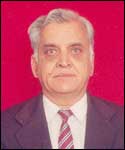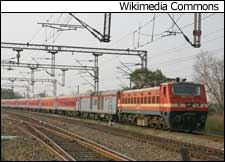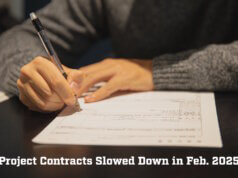 The proposed introduction of high-speed trains has so far been limited to feasibility reports, no less than six of them at the last count. With poor financial health, Indian Railways has not been able to make much headway and most of the proposals have remained stuck on paper, writes R.C. Acharya, former Member (Mechanical), Railway Board.
The proposed introduction of high-speed trains has so far been limited to feasibility reports, no less than six of them at the last count. With poor financial health, Indian Railways has not been able to make much headway and most of the proposals have remained stuck on paper, writes R.C. Acharya, former Member (Mechanical), Railway Board.
With over 64,000 km of network, 7,400 stations and transportation of 17 million passengers daily on its 11,000 long distance and 6,000 suburban trains, plus over billion tonnes of freight every year, Indian Railways is the second largest system in the world under a single management.
After commissioning of the 741-km long Konkan Railway from Roha in Maharashtra to Mangalore in Karnataka in 1998, and project uni-gauge involving conversion of about 20,000 km of metre and narrow gauge tracks to broad gauge, over the last two decades, an ambitious project of building two brand new Dedicated Freight Corridors is now in hand.
Estimated to cost over Rs.80,000 crore, it promises to provide a quantum leap in Indian Railways’ freight carrying capabilities. A 1,278-km long eastern section from Dankuni in West Bengal to Ludhiana in Punjab will carry burgeoning coal traffic from the eastern coalfields to scores of thermal plants in Bihar, Uttar Pradesh, Haryana and Punjab.
Similarly, a 1,515-km western section from Dadri near Delhi to Mumbai in Maharashtra will carry vital exim container traffic, and provide an efficient rail transport backbone for the 150-km wide Delhi-Mumbai Industrial Corridor all along the route.
Financing by JICA (Japanese International Cooperation Agency), which helped kick-start the world-class DMRC (Delhi Metro Rail Corporation), has been provided for the western section while World Bank has pitched in to help create the eastern section.
Though JICA loan may come cheap at about 1 per cent interest and most generous repayment terms, it comes with strings tied. Not only 30 per cent of the material purchases have to be from Japan, for the balance 70 per cent the lead contractor has to be Japanese, though it may have Indian partners.
This has ensured not only long-term business opportunity for the Japanese industries but also a captive market for Japan’s locomotives, rolling stock, signalling equipment, and the construction industry in general.
No less than seven CPMs (chief project managers) on the western section based in Mumbai, Surat, Vadodara, Ahmedabad, Ajmer, Jaipur, and Dadri for the short but highly vital Dadri-Rewari link have ensured completion of the critical task of land acquisition.
It was also helped to a very large extent by the new Special Railway Projects Act of 2008, which replaces certain provisions of the earlier Railway Act of 1886. Under this an award cannot be challenged in a court of law, though the complainant could go for arbitration. The whole process would take about one year as against the normal three years or more for acquisitions under the earlier system.
Moreover, by actively pursuing construction of ROBs (road over-bridges) to eliminate level crossings wherever tracks are close to the existing alignments, the district administration was only too happy to help the DFCCIL to speed up the process with various permissions and sanctions.
The multi-crore project has now got into high gear with award of the 640-km long Rewari-Palanpur section of western corridor to a consortium of Japanese infrastructure major Sojitz and India’s Larsen & Toubro Ltd for Rs.6,700 crore while a consortium of Tata Projects and a Spanish firm, Aldesa, is to undertake civil engineering works on 343 km of Khurja-Kanpur section in Uttar Pradesh at a cost of Rs.3,300 crore.
Meanwhile, Railways had on their own completed civil engineering works such as bridges, embankment etc. on the land already in their possession on the Mughalsarai-Sonnagar section, thereby saving precious time.
Now the first ever ‘Track Laying Machine’, supplied by Ferrovia Transrail Solutions Pvt. Ltd, is in operation from New Karwandiya to Durgawati, a distance of 66 km. This work, costing about Rs.147 crore, involves design, procurement, construction of track and other related works, testing and commissioning of electrified double rail track on a design-build-lump sum basis.
 This opens up a brand new chapter in building new rail alignments, a major departure from a labour intensive semi-mechanised operation involving nearly 3,000 workers taking 10 days to build a kilometre of track, to building more than one km every day!
This opens up a brand new chapter in building new rail alignments, a major departure from a labour intensive semi-mechanised operation involving nearly 3,000 workers taking 10 days to build a kilometre of track, to building more than one km every day!
Recent crisis in availability of coal has prompted Coal India Ltd to open up new deposits and Railways have been asked to construct a 132-km long section from Bhupdeopur-Gharghoda-Dharamjaygarh to Korba, and a 122-km long alignment from Gevra Road to Pendra Road, costing about Rs.4,000 crore.
While CIL would increase its output by 300 million tonnes, inching closer to its target of 615 million tonnes by 2016-17, Railways could end up earning an additional freight revenue of Rs.10,000 crore a year.
Over the last one decade or so introduction of high-speed trains has been limited to commissioning feasibility reports, no less than six of them at the last count. With poor financial health, Railways has not been able to make much headway and most of the proposals have remained stuck on paper.
Since a price tag of Rs.150 crore per km for the 250 kmph and over variety would need deep pockets for even a PPP project, Railways is now seeking low-cost solutions, aiming at hiking maximum speeds of its premier trains such as Rajdhani and Shatabdi from 130 kmph to a level of only 160-200 kpmh. This could result in 10 to 25 per cent reduction in transit time depending on how much of the track would be upgraded to run such trains at 160-200 kpmh.
Upgrading the entire 64,000 km of its network being out of the question, only a few sections with a potential for high passenger volumes have been identified viz. Ahmedabad-Mumbai, Howrah-Haldia, New Delhi-Agra-Jhansi-Bhopal, Delhi-Lucknow, Chennai-Bengaluru-Mysore, Delhi-Amritsar, and Delhi-Chandigarh.
Amongst these, Ahmedabad-Mumbai already has 22 trains while Delhi-Amritsar runs 32 trains each day, most of them fully packed. These sections could easily support a much higher tariff, with passengers still opting for it on account of lower city centre to city centre transit time.
The high-speed trains of Europe viz. TGVs and ‘Intercitys’ connect major towns most of which are now only less than three hours away, or provide overnight service between various European Capitals, offering stiff competition to the airlines for total transit time.
These high-speed corridors could also be viewed as a socially desirable investment, helping to slow down the rampant growth and decongest metros such as Delhi, Kolkata, Chennai, Hyderabad and Mumbai, by spurring the development of Tier 2 & 3 cities around them.
It could help to save on the nation’s fuel bill, reduce air pollution with a more fuel efficient mode of rail transport, and reduce road congestion and resultant accidents. Reduction of commuter fatigue is perhaps one of the factors which is making such high-speed services of Japan, Europe and China increasingly popular.
However, choice of a section could easily degenerate into a political oneupmanship amongst various states and metros, but its success would ultimately depend on the business model developed and its financial viability, which could even attract private investment in a PPP ventures — an option being vigorously encouraged by the Planning Commission.
Ultimately, its success would depend on ‘Techno-Economic’ rather than ‘Political’ considerations, a concept which our worthy ‘netas’ are unfortunately seldom comfortable with!
(R.C. Acharya can be contacted at acharya@bol.net.in)











